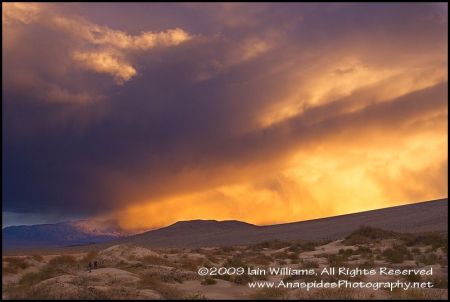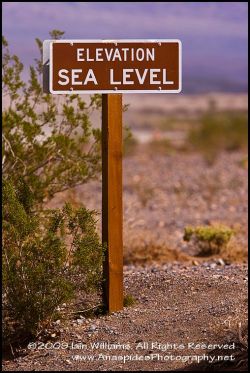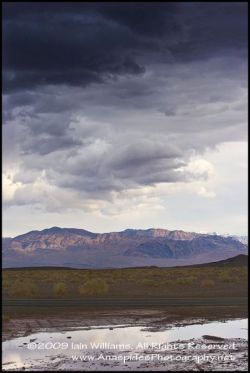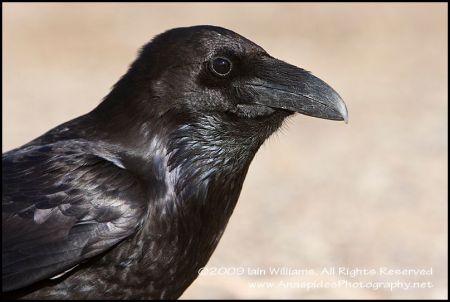White Sands National Monument, New Mexico
 Tuesday, February 24, 2009 at 3:41PM
Tuesday, February 24, 2009 at 3:41PM 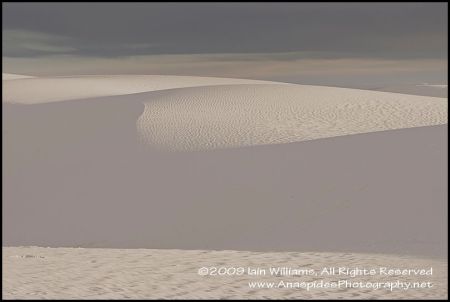 Arrived at White Sands late in the afternoon just in time to scope out the park and make a quick hike into the sand dunes to take a sunset image. As the park is not open for general camping accommodation had to obtained in the nearby town of Alamogodo 13 miles away.
Arrived at White Sands late in the afternoon just in time to scope out the park and make a quick hike into the sand dunes to take a sunset image. As the park is not open for general camping accommodation had to obtained in the nearby town of Alamogodo 13 miles away.
On the way to White Sands I had to pass through a border post which is operated by the Border Patrol. The Border Patrol are responsible for stopping illegal aliens from entering the US. The officer asked if I was an American to which I replied that I was Australian. He then requested to see my passport. My passport was located in my spare bag located in the thule on top of the vehicle. I had to unpack the thule, find my passport and show the officer. I guess he thought I was an illegal alien!
The following morning was an early start to capture the sunrise at White Sands. Arriving at the park at 0630 I was shocked to discover the park was not open to 0700 which was just after sunrise! Therefore, I missed the light pinks and blues of sunrise as the sun struck the white sand and hills beyond. Not to miss out, we quickly drove to the point that we had decided on the night before, grabbed our gear and quickly negotiated a few dunes to get away from the car park. Despite missing sunrise, the morning was not wasted as there was moderate cloud cover which provided some diffused light.
 The afternoon was relatively overcast and it was feared that the time would be wasted, Despitr this, we persisted and hiked out to another location free of tracks. Setting up our tripods we hung about waiting for the sun to hopefully sneak out from behind the cloud cover. Just before sunset, our efforts were rewarded and light struck several dune slopes. A nearby storm also provided some dramatic clouds which added to the low light.
The afternoon was relatively overcast and it was feared that the time would be wasted, Despitr this, we persisted and hiked out to another location free of tracks. Setting up our tripods we hung about waiting for the sun to hopefully sneak out from behind the cloud cover. Just before sunset, our efforts were rewarded and light struck several dune slopes. A nearby storm also provided some dramatic clouds which added to the low light.
It was 6:30 PM as we made our way back to the car when we heard a quick yelp (siren) from a ranger vehicle (on the access road). This was followed by a loud haler informing us that the park closed at 7.00PM. The speaker then announced that the current time was 6:32 PM. I guess the ranger saw the unattended car and was concerned we would be trapped inside the park after the gate was closed and locked.
White Sands is part of the US missile range and F18's flew continually overhead on there way to the bombing site. Considering the beauty of the area it was disappointing to find a huge airforce base (Holloway AFB) and missile range near the park; any aircraft flew directly over the park to reach the range. On several occasions you could hear the supersonic jets break the sound barrier with a BOOM. Later in the day another BOOM was heard and the shock wave from the detonation of bombs rocked the car (which was miles away from the actual missile range).
Four types of sand dunes can be observed at White Sands depending upon the volume of sand available; parabolic, parallel, transverse and barchan. The sand is indeed very white and very fine grained. The dunes are not actually comprised of sand (quartz) but are formed from gypsum.
Although the area is very harsh there is a wealth of flora and flora in the park ranging from lizards and insects to mammals including the mouse and fox. The Yucca tree is very common in the park and many can be seen growing upon the lee face of sand dunes. The Cottonwood tree is also relatively common and is very interesting in that it grows within the sand dune itself. On the dune you can see the trees upper branches while the remainder of the trunk is below the actual sand's surface. The tree survives like this because Cottonwoods have a deepish tap root which secures a water supply from the water table located at a depth of 4 feet below the playa surface.
The image at left is a rocket used at White Sands by the US military.
The last night at White Sands we dined in a restaurant and discussed some future trip itineraries. Everything was jotted down in small notepad which also had several pages of notes. After departing the restaurant and driving an hour up the highway Rebecca received a call from Lee (Rebecca's husband) to inform her that she had left the book on the table in the restaurant. Therefore, a one hour drive north ended up taking 3 hours as we had to return to the restaurant to pick up the book and then continue our journey again.
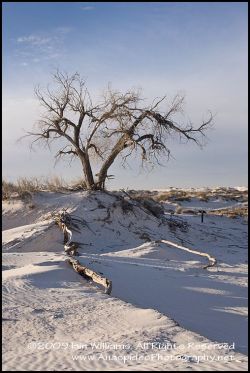 |
 |
|



